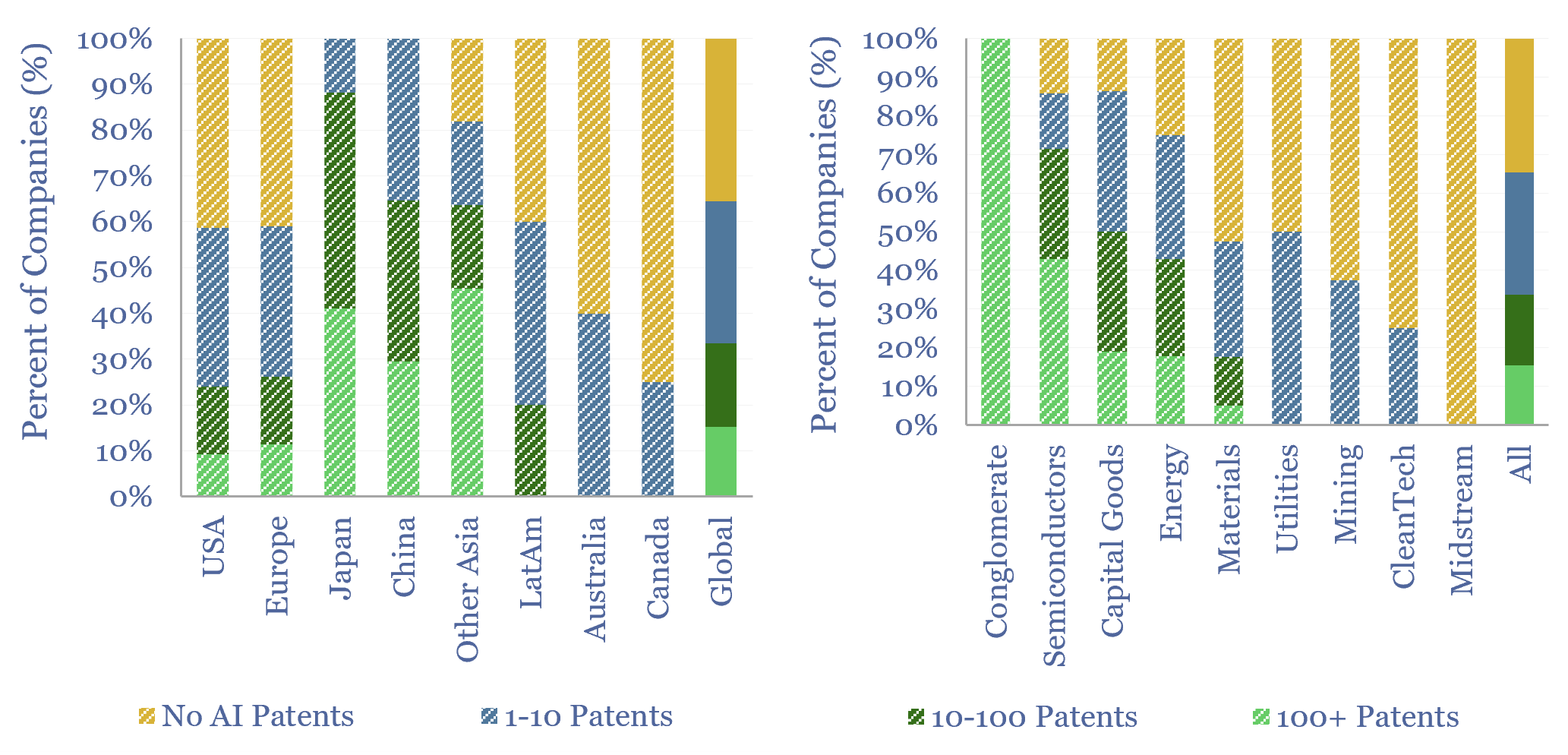This data-file tabulates industrial companies deploying AI, based on their patent filings. 200 leading industrial companies have filed 40,000 AI/ML-related patents in 2022-24, with 65% now developing their own AIs in-house. Examples are summarized. We will continue adding to and expanding this data-file over time.
This data-file tabulates ways in which industrial companies are deploying AI, by reviewing their patent filings, counting the numbers of patents, and summarizing salient patents, starting with a sample of 200 of the companies that have most featured in our research.
Globally, out of c200 of the most discussed companies in our research, 35% have filed no patents using AI/machine learning, 30% have filed 1-10, 20% have filed 10-100 and 15% have filed hundreds or thousands of patents.
By geography, companies deploying AI are equally likely to be located in the US or Europe, but surprisingly Asian companies, especially big conglomerates, seemed most active in AI-related patent filings.
By industry, AI-related patent filings have been most prevalent from large industrial conglomerates, then companies in semiconductors, capital goods, energy and materials. There are also interesting AI-related patents from companies in utilities, mining and clean-tech.
By company size, large companies were most likely to file large numbers of AI/ML patents, but the overall correlation between AI patent filings and employee counts was only c25%.
Details on the patents are particularly interesting, as they reveal how many broad uses of AI will emerge from the woodwork, and “who is doing what” today.
For example, patent <WO2024026531A1> from BHP covers an autonomous ship loading system, for conveying mined material onto a bulk carrier, noting that “if a loading error is made, it may cause a bulk carrier to capsize, or strain the hull such that it breaks in half at the pier or wharf… [while] distributing bulk material in concert with a moving vessel can be very difficult, particularly compensating for movement from swell, wind and tidal conditions”. The patent uses real-time LiDAR from the loading arm and within the storage space, and continuously tracks the position of the boom relative to the storage space, to optimize the distribution of the bulk material. There are hundreds more examples like this in the data-file, and discussed in our recent note into Industrial AI and the Jevons Effect.
We will continue adding to this data-file of industrial companies deploying AI, zooming in on specific contexts. For example, we already assessed the interesting overlap between AI and sensors.
